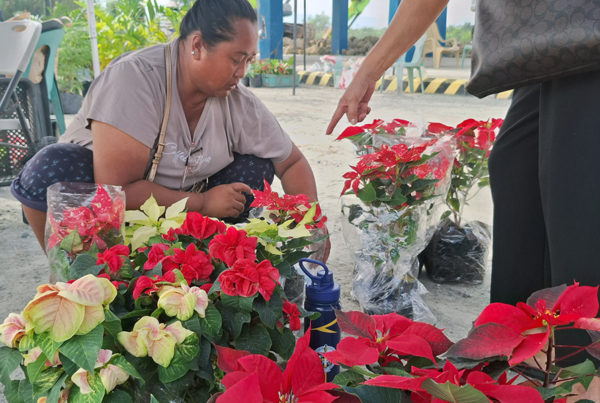Business Log
P. vannamei experimental culture is successful
By Eva C. Visperas
Yes, that’s the good news I learned over the weekend and let’s give credit where credit is due.
The indefatigable Dr. Westly Rosario, executive director of the National Integrated Fisheries Technology Development Center and concurrent Bureau of Fisheries and Aquatic Resources (BFAR) center chief of Dagupan City is foremost in our list. I am a witness to the guy’s dedication to his job.
Also, to House Speaker Jose de Venecia Jr. whose encouragement and push led to the experimental breeding of P. vannamei, also known as Pacific white shrimp.
And of course, to Director Malcolm Sarmiento, for his strong support for the project.
Let’s have a quick flashback.
The government, through a memorandum of agreement with the Agrifisheries World Incorporated, imported P. vannamei breeders from the Kona Bay Marine Resources in Hawaii which were certified by the University of Arizona as being free from nine pathogens (bacteria and viruses). The University of Arizona is the recognized reference disease diagnostic laboratory of the US shrimp consortium.
The move was controversial but it is now becoming the best hope to revive the shrimp industry in the country. Finally, the once dying shrimp industry is alive again, thanks to P. vannamei.
A little fast forward.
Inspired by the success on the experimental breeding of P. vannamei at the BFAR center in Bonuan Binloc this city, the shrimp growers in the Visayas and Mindanao areas now want to adopt the technology.
In my phone interview with him, Dr. Westly said the growing interest of shrimp raisers from those areas to adopt P. vannamei was signified during their shrimp congress in Bacolod City recently.
“Dati, ayaw nila, ngayon nag-aapura na sila para makapag-culture na rin ng shrimp species na ito (Before, they didn’t want it but now they’re in a hurry to culture this shrimp species),” Rosario said.
He added that these prawn growers even intend to pass a resolution urging the government to lift the ban on the culture of this species so that they could already be given the chance to raise it commercially. You see that? That’s how a Pangasinense works!
“That’s the beauty of what we did,” Rosario added.
He said they had a good harvest from their accredited fish farms from five to seven tons per hectare in 120 days. These accredited fish farms numbering 20 have facilities that are bio-secure.
Remember that most of the fish farms in the country were closed for four years because the prawn industry suffered a slump. After less than two years of their experimental culture of vannamei, he proudly reported great strides in their undertaking. In the whole country, it is only in this center that was allowed to do a legal experiment on the hatchery of vannamei.
Rosario added that the BFAR here showed the integrity of specific pathogen- free strains of P. vannamei breeders that they imported from Hawaii. Initially, howls were raised against it by several sectors allegedly due to feared diseases of this species, among other issues. This, however, was overcome because of proper protocol observed. He said despite initial problems encountered, they are now into continuous breeding.
Look at this. One female breeder can spawn from 100,000 to 300,000 per spawning every three days. They can be marketed in 75 days. Its feed conversion ratio is less than 1.5, meaning less than 1.5 kg feeds to produce one kilo of shrimps. The survival rate is not less than 50 percent based on report of accredited fish farms and can go as high as 80 percent.
These are sold in the market at P330 per kilo.
Rosario said that the return of investment is 50 percent and they want to make its culture also available to small prawn growers by giving them the simple technology of P. vannamei.
De Venecia, during the launching of the breeding where he was guest, called the bold move a major historic breakthrough in the government’s campaign to bring more food on the dining table through the successful research on P. vannamei.
(You can also read this writer’s other stories at http://businessblog.prepys.com.)







